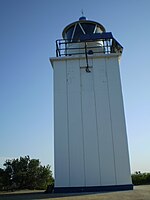Koonya (1887)

The Koonya was a wood carvel screw steamer built in 1887 at Hobart, that was wrecked when it stuck the shore at Doboy reef whilst carrying passengers & cargo between Moruya and Sydney and was lost off Cronulla Beach, Port Hacking, New South Wales on 25 January 1898. The vessel was originally built by William Bayes of Hobart and owned by the Risby Bros merchants and used to trade between Hobart and the Tasman's Peninsula as well as running a number of pleasure cruises. In 1888 the ownership changed and the vessel started trading to the West Coast of Tasmania often used to carry gold, silver and tin back from the mines on the west coast. During this period it was involved with two collisions and a number of smaller incidences. Finally in 1898 ownership was transferred to the Moruya Steam Navigation Company and the vessel commenced weekly runs between Sydney and Moruya before finally running ashore to the south of Sydney.
Excerpt from the Wikipedia article Koonya (1887) (License: CC BY-SA 3.0, Authors, Images).Koonya (1887)
Potter Point Road, Sydney Kurnell
Geographical coordinates (GPS) Address Nearby Places Show on map
Geographical coordinates (GPS)
| Latitude | Longitude |
|---|---|
| N -34.042876 ° | E 151.206777 ° |
Address
Endeavour Heights Reserve
Potter Point Road
2231 Sydney, Kurnell
New South Wales, Australia
Open on Google Maps








